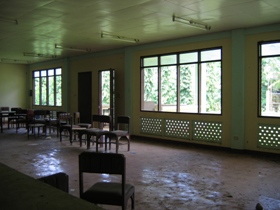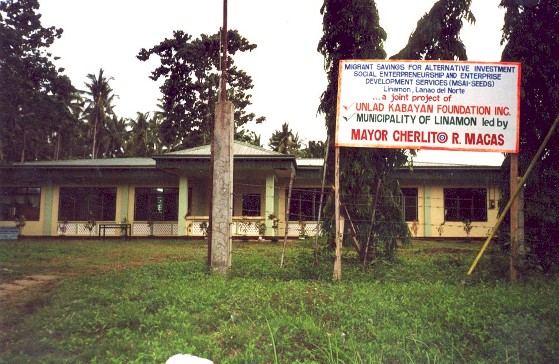| A Catalyst for Community Partnering Finding Institutional Partners Recruiting and Training Community Researchers Conducting Research with Community Members Presenting Research Findings Sustaining Partnerships |
Finding Institutional PartnersCommunity Partnering can be initiated by:
No matter how the process starts, success or failure will depend on the quality of the partnerships that grow up to support it. The challenge in any locality is to find willing partners who will encourage community research and experimentation into new pathways for development. Finding institutional partners interested in participating in a new and unfolding process is an important first step. Institutional partners may be able to contribute resources such as personnel, or funds to employ place-based researchers, or small amounts of capital to fund enterprise research and development groups. Three likely institutional partners are:
Working with NGOsMany NGOs are already involved in improving the livelihoods of poor people. What can the Community Partnering approach offer them? Community Partnering promotes a conceptual shift from seeing inadequacies and weaknesses in the local context to appreciating strengths and capacities. This shift is often appreciated by NGOs who are struggling to find ways of mobilizing communities so they can start to solve their own problems. One challenge for NGOs is to see community members as capable of conducting their own research and coming up with their own ideas for local development. Community Partnering means allowing new kinds of relationships between community members and NGO staff to evolve. The case of Sintesa and Community Partnering Community Partnering was introduced to the Indonesian NGO Sintesa in Southeast Sulawesi by researchers from the Australian National University. Sintesa staff were immediately attracted to the dual image of the glass half empty or half full. The notion that local communities already possessed a wide range of assets, capacities, strengths and ideas that could be mobilized for immediate benefits was a concept that captured their imagination and lead to a creative process that gradually integrated the ABCD approach into the NGO's existing development practice. Sintesa were surprised by the energy and enthusiasm that the approach generated among the participating communities. Farmers in Kaombu village on Buton Island, for example, commented that this was the first time they felt themselves and their livelihoods to be at the centre of a planning process. Participants acknowledged the novelty and advantages of the approach over more prescriptive, needs-based strategies characteristic of much conventional participatory planning. This view was particularly evident in the early phase of consultation where attention is directed towards community asset mapping and the identification of assets and comparative strengths that might be mobilized towards the creation of local enterprises. The NGO facilitators saw advantages in
Sintesa regional manager, Syukri Rauf has commented that previously they considered Rp 30-40 million ($AUD 500) to be the absolute minimum necessary to achieve an identifiable result in community intervention, but in the case of the Community Partnering Project, they achieved the same results with less than half the start up investment. This is in part due to the value added and incremental nature of building upon and developing existing economic activities or familiar activities. Working with Local GovernmentsLocal municipal governments are charged with the task of facilitating local development. But many local governments do not see their units as having likely ingredients for self-development. Community Partnering helps officials to see their locality in a new light, full of development possibilities that could increase well-being. Community Partnering does not rely on big inputs of cash from outside to get going. But it does rely on cooperation between government officials, NGOs and community members and the free flow of information, advice and feedback. Community Partnering can act as a catalyst that bridges relations within the municipality between, for example, people's organizations and local government. Community mobilization through Comunity Partnering has the potential to change established power relations. It offers local governments outcomes that increase civic participation. The case of Linamon Municipality and Community Partnering
Together Unlad Kabayan and the Linamon LGU embarked on a Community Partnering Project with researchers from the Australian National University to conduct research and generate community based enterprises. The LGU was able to offer information about every community in the municipality and Unlad researchers added newly gathered information to compile a comprehensive assets map of the LGU. Economic planning has been influenced by Communty Partnering as local people have been able to set up new enterprises and seek assistance from Unlad Kabayan and the Linamon LGU. Improved well being across the rural municipality is indicated by increased primary school enrolments and greater participation in local elections.
New centre for social enterprise development |

